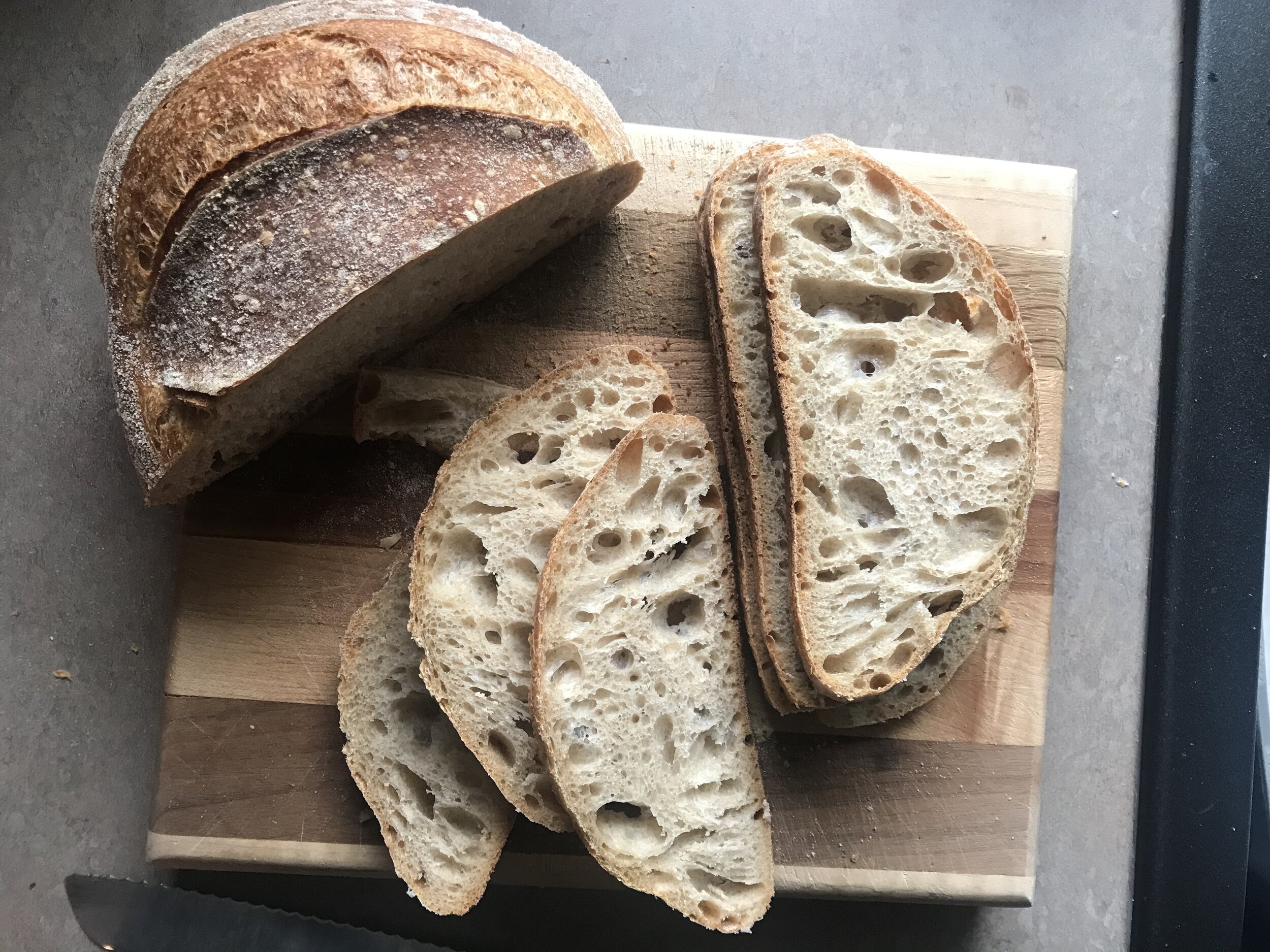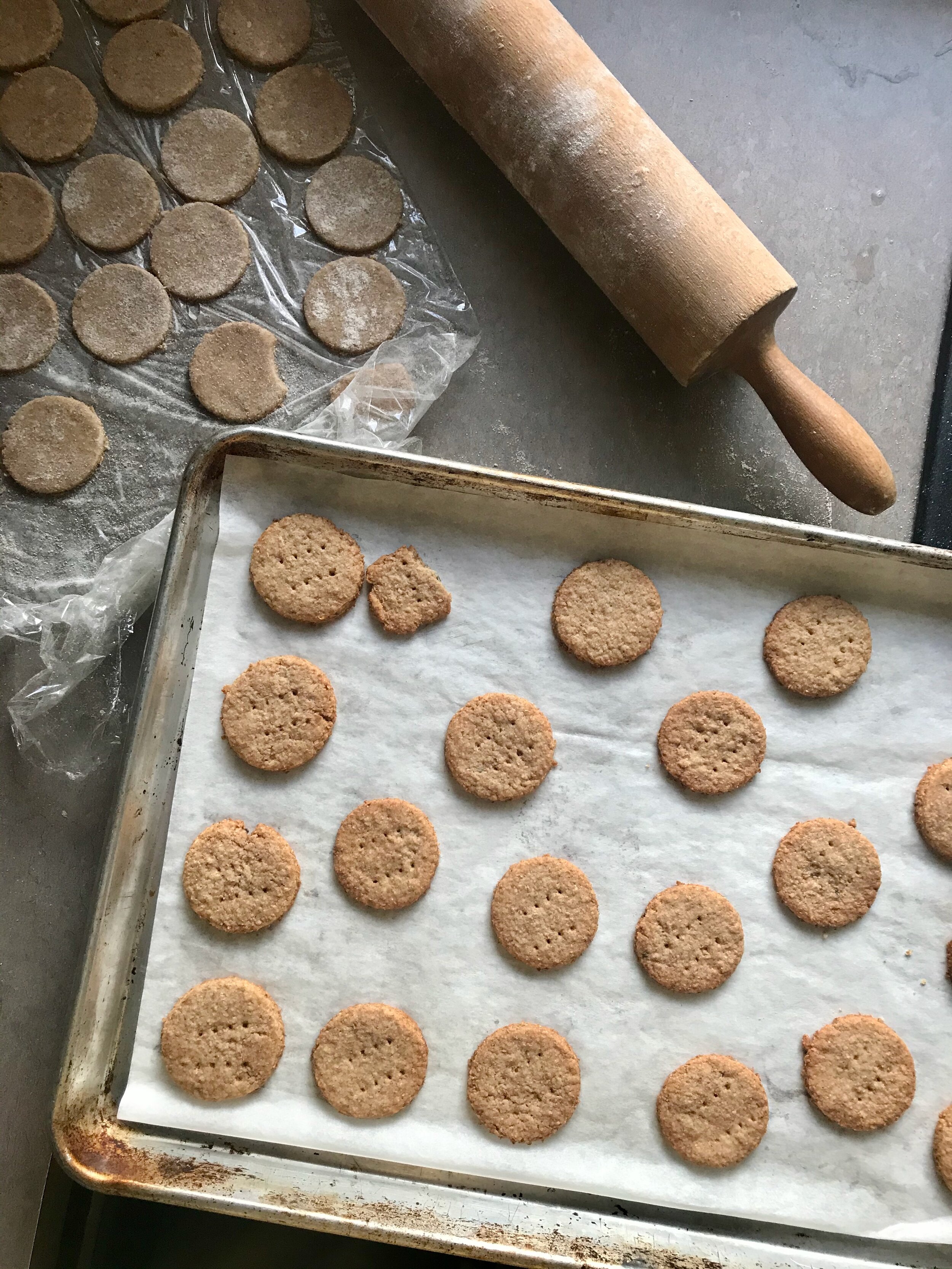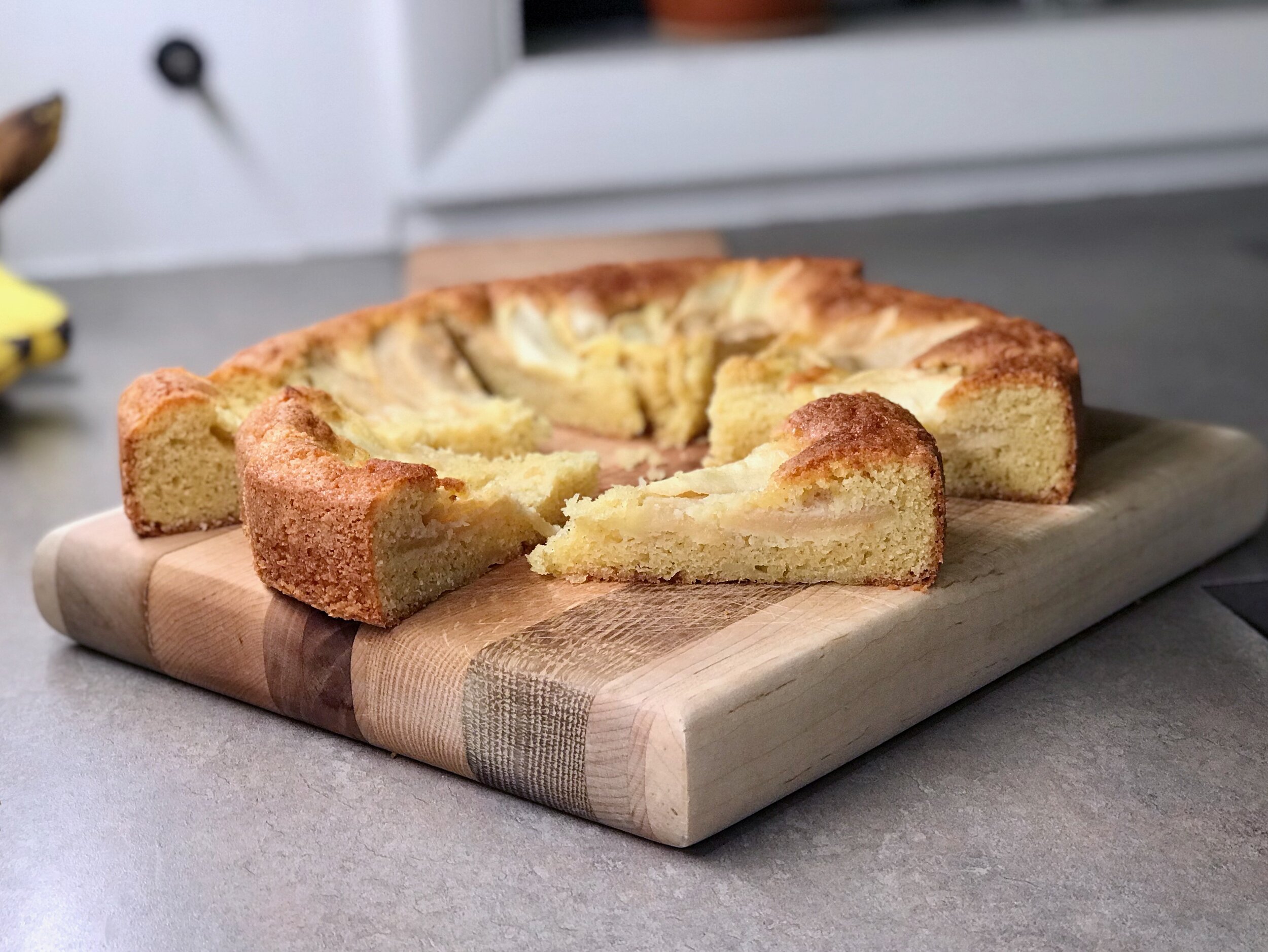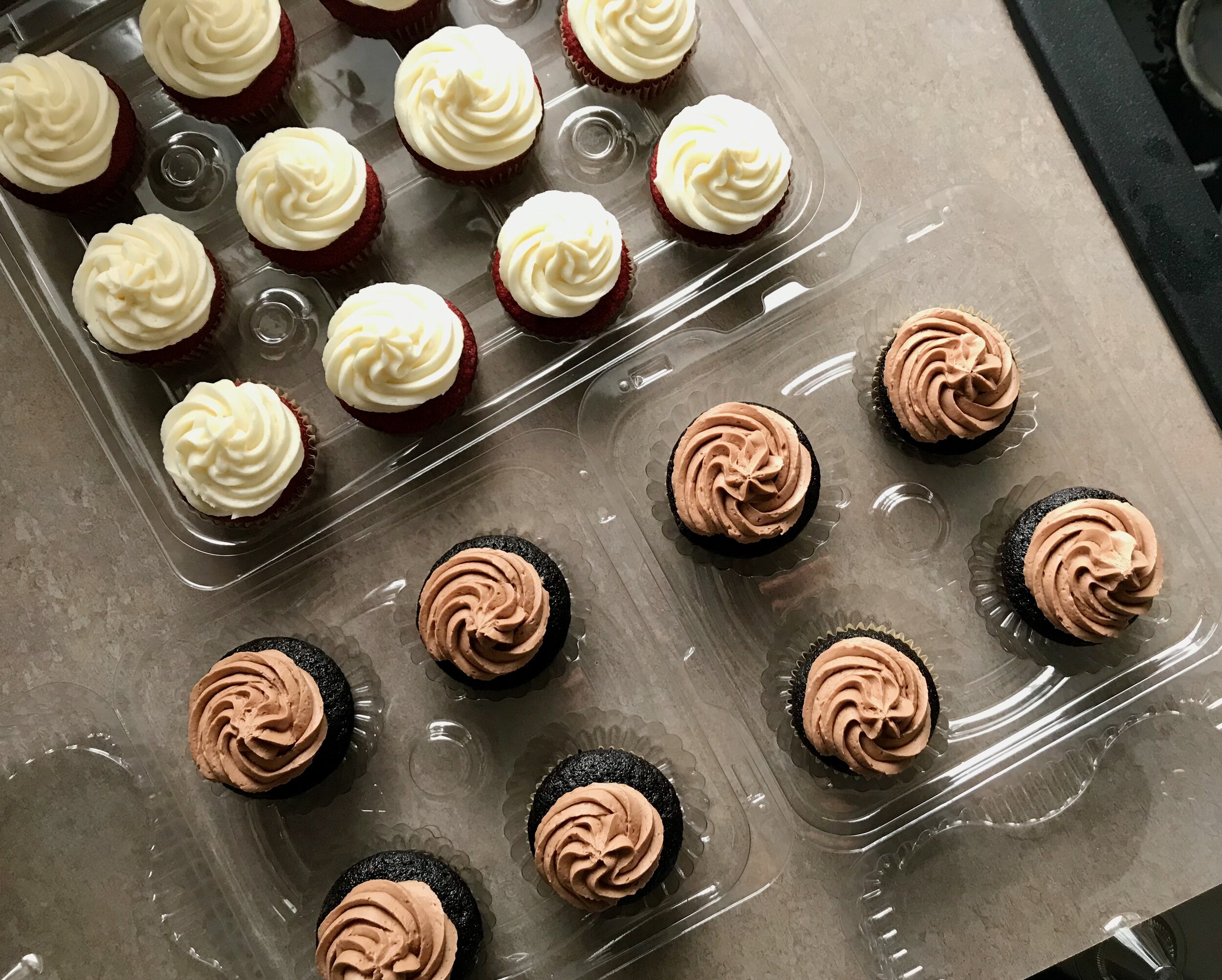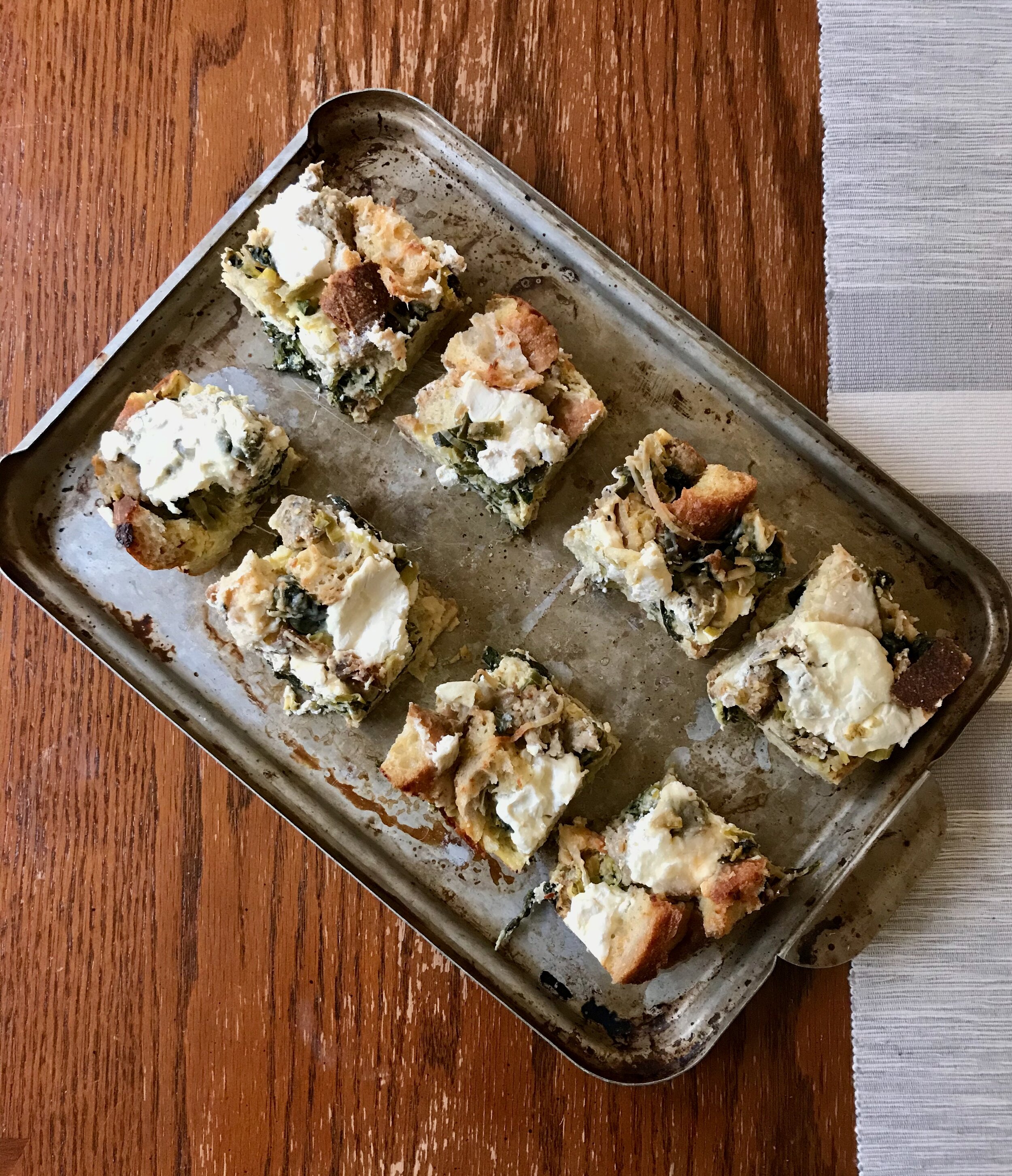Braised Pork Sandwiches with Broccoli Rabe and Provolone
This recipe appeared somewhere in my social media browsing and it look so good, and the timing was right, so Lara and I decided to just go for it! It was a good choice!
The recipe was super simple, as are most roasts/braises, and absolutely delicious, especially with such a great piece of pork from my favorite butcher. Look at the fat on that thing!
Lara made this on a Monday she had off. Throw everything in a pan and let it cook until done. Easy! She had to adjust the cooking method because the original recipe calls for this to be made in the slow cooker, but it was easy enough to adjust for the oven. Just be sure to watch the pork near the end of the braising time to ensure the water hasn’t all evaporated. After 3.5 hours most of the water was gone and the pork was looking very dark, in a good way, but it would have been easy to go a little too far.
I would definitely not skip the broccoli rabe either, it was a great addition, especially with all the lemon - Don’t Skimp on the Lemon!
One recommendation; the recipe calls for you to serve this on a hoagie roll. I didn’t have any but I had plenty of sourdough so I used slices of that instead. This was tasty, but very messy. The pork is so VERY juicy and fatty and so the slices of bread kind of fell apart while eating. A sturdy hoagie or something similar would do a much better job holding up to this type of sandwich.
A great make ahead meal for a crowd.
Braised Pork Sandwiches with Broccoli Rabe and Provolone
Adapted from Bon Appétit
Ingredients
3 pounds boneless, skinless pork shoulder
¼ cup extra-virgin olive oil
¼ cup red wine vinegar
1 head of garlic, halved lengthwise through root end
3 sprigs rosemary
2 tablespoons honey
2 teaspoons fennel seeds
1 teaspoon crushed red pepper flakes
1 tablespoon kosher salt, plus more
Broccoli Rabe and Assembly
Kosher salt
2 bunches broccoli rabe, woody ends trimmed
¼ cup extra-virgin olive oil
6 garlic cloves, thinly sliced
½ teaspoon crushed red pepper flakes
4 seeded semolina or hoagie rolls
4 ounces sharp provolone, thinly sliced
1 lemon, cut into wedges
Directions
Pork
Preheat oven to 325 degrees. Combine pork, oil, vinegar, garlic, rosemary, honey, fennel, red pepper flakes, 1 Tbsp. salt, and 1 cup water in a Dutch Oven. Turn pork several times with tongs to coat and mix ingredients. Place lid on the Dutch oven and place in the preheated oven and braise until pork is very tender and shreds easily, about 3 1/2 hours. Keep an eye on the roast in the last hour of cooking to ensure the liquid has not all evaporated. Add more water as needed.
Transfer pork to a medium bowl and let rest until cool enough to handle. Pour cooking liquid through a fine-mesh sieve into a medium saucepan; discard solids. Let liquid settle so fat rises to the top, then pour off and discard all but a thin layer of fat. Bring liquid to a simmer over medium heat and cook, stirring occasionally, until reduced by about a third, 12–18 minutes.
Meanwhile, shred pork with your fingers or 2 forks, discarding any large bits of fat. Season with salt.
Set aside 1 cup cooking juices for serving, then add shredded pork to saucepan with remaining juices and toss to coat and rewarm pork.
Do Ahead: Pork can be cooked 2 days ahead. Shred and add to reduced juices, then let cool, cover, and chill. Reheat over low.
Broccoli Rabe and Assembly
Bring a large pot of salted water to a boil over high heat. Fill a large bowl with ice water and have at the ready. Add broccoli rabe to pot and cook just until stems are tender, about 2 minutes. Using tongs, transfer broccoli rabe to bowl of ice water and agitate to rapidly cool down. Drain and pat dry on paper towels. Transfer to a cutting board and slice into 1" pieces on the diagonal, all the way from stem to leaves.
Heat oil in a large skillet over medium. Cook garlic and red pepper flakes, stirring often, until garlic is golden around the edges, about 2 minutes. Increase heat to medium-high and add broccoli rabe; season with salt. Cook, tossing constantly, until leafy bits are just starting to crisp slightly, 5–10 minutes.
Divide pork among bottoms of rolls or on a piece of toasted bread. Top with provolone, shingling slices. Spoon broccoli rabe over, then squeeze lemon wedges over broccoli rabe. Close up sandwiches and cut in half. Serve with reserved juices for dipping.
Do Ahead: Broccoli rabe can be blanched 1 day ahead. Pat dry, cover, and chill.







